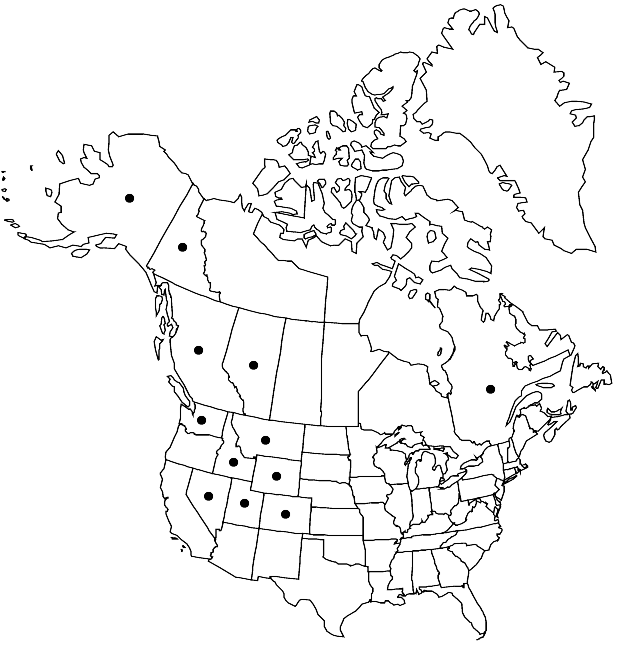Draba incerta
Amer. J. Bot. 4: 261. 1917.
Perennials; (cespitose, often pulvinate); caudex branched (dense with persistent leaf remains, branches sometimes terminating in sterile rosettes); scapose. Stems unbranched, (0.2–) 0.4–1.4 (–2.1) dm, often pubescent throughout, sometimes glabrous distally, trichomes often simple and 2–5-rayed, 0.1–0.5 mm, (sometimes with mostly subpectinate ones). Basal leaves rosulate; petiolate; petiole (0–1 cm), ciliate throughout; blade narrowly oblanceolate to linear, (0.4–) 0.6–1.7 (–2.5) cm × (1–) 1.5–3.5 (–5) mm, margins entire, (ciliate, trichomes usually simple, rarely 2-rayed, 0.2–1.1 mm), surfaces usually pubescent with short-stalked, pectinate trichomes, 0.15–0.5 mm, sometimes also with 4–6-rayed ones, (midvein usually obscure abaxially), sometimes glabrous adaxially. Cauline leaves usually 0 (or 1, as a bract); sessile; blade linear to oblong, margins entire, surfaces pubescent as basal. Racemes 3–14 (–30) -flowered, usually ebracteate, rarely proximalmost flowers bracteate, elongated in fruit; rachis not flexuous, glabrous or pubescent as stem. Fruiting pedicels ascending, straight, (2.5–) 4–11 (–27) mm, glabrous or pubescent, trichomes 2–5-rayed or pectinate. Flowers: sepals broadly ovate, 2.5–3.5 (–4) mm, pubescent, (trichomes simple and 2-rayed or 3-rayed); petals yellow (fading white), oblanceolate to obovate, 4–6 × 1.5–2.5 mm; anthers ovate, 0.3–0.5 mm. Fruits broadly ovate to lanceolate, plane, flattened, 5–9 (–11) × 2–4 mm; valves glabrous or puberulent, trichomes simple and 2-rayed, 0.05–0.3 mm; ovules 8–16 (–20) per ovary; style 0.2–0.9 mm. Seeds oblong, 1.1–1.5 × 0.7–1 mm. 2n = 112.
Phenology: Flowering Jun–Aug.
Habitat: Rock outcrops, talus, gravelly areas, tundra
Elevation: 0-3300 m
Distribution

Alta., B.C., Que., Yukon, Alaska, Colo., Idaho, Mont., Nev., Utah, Wash., Wyo.
Discussion
Draba incerta was shown by G. A. Mulligan (1972) to be sexually reproducing and 14-ploid with x = 8. It is often confused with the apomict D. oligosperma (2n = 32, 64). Draba incerta is readily separated from D. oligosperma by having well-formed (versus abortive) anthers and pollen, stalked (versus sessile) leaf trichomes, and ciliate (versus non-ciliate) basal leaves with obscure (versus prominent) midveins. Although both species have leafless scapes, one often finds a bract adnate to, or subtending, the proximalmost pedicel in D. incerta.
Draba incerta is found near sea level in Alaska.
Selected References
None.
Lower Taxa
"elongated" is not a number."not" is not a number. "elongated" is not a number."thick" is not a number."dm" is not declared as a valid unit of measurement for this property."dm" is not declared as a valid unit of measurement for this property.